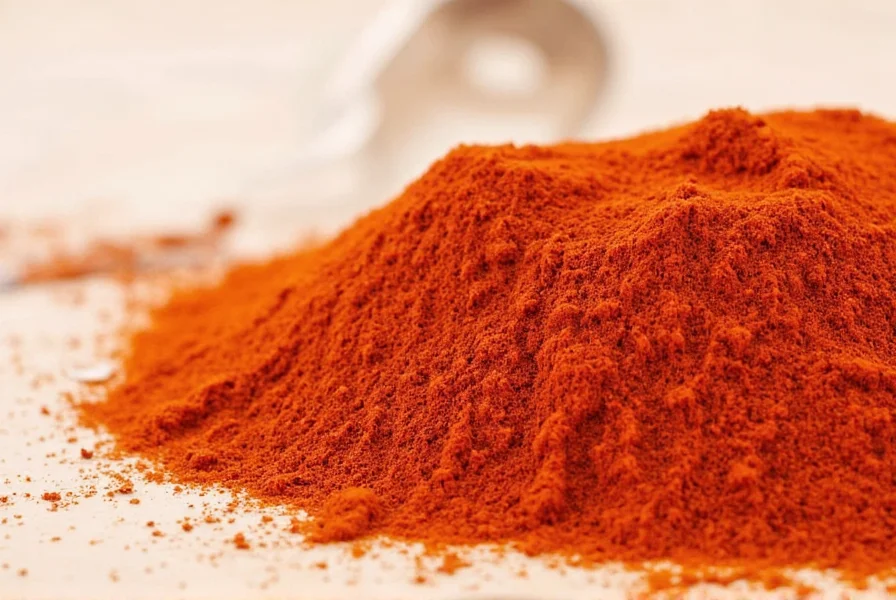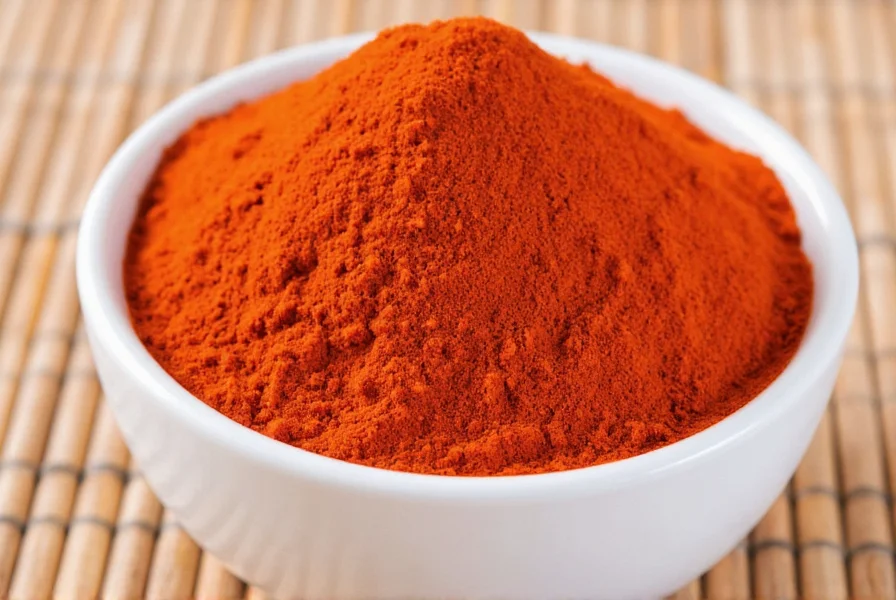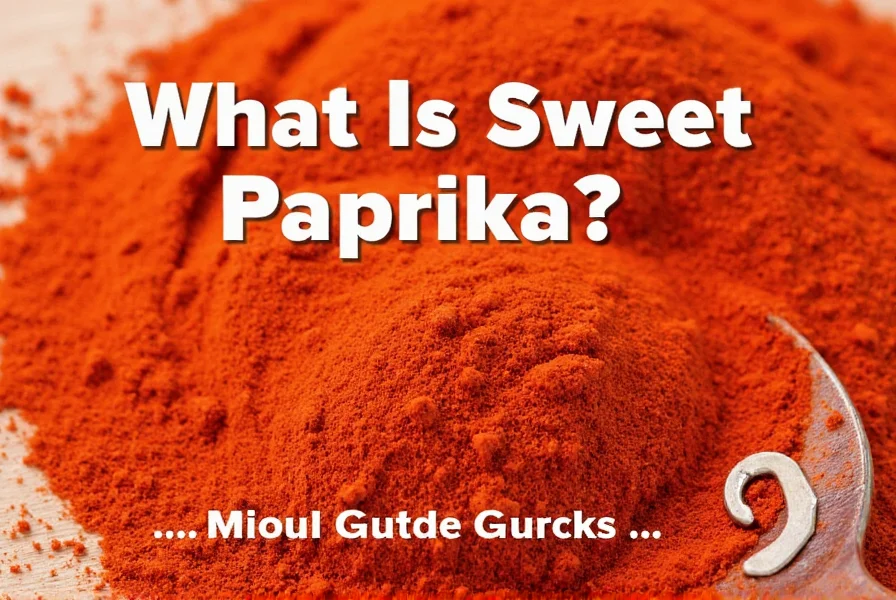Sweet paprika stands as one of the most versatile spices in global cuisine, particularly celebrated in Hungarian, Spanish, and Mediterranean cooking traditions. This distinctive spice gets its brilliant red hue from fully matured red peppers that are dried and finely ground. The specific pepper varieties used, growing conditions, and processing methods all contribute to its characteristic mild flavor profile.
Origin and Historical Significance
While peppers originated in the Americas, sweet paprika as we know it developed primarily in Central Europe. Hungarian farmers began cultivating special sweet pepper varieties in the 19th century, creating what would become Hungary's national spice. The town of Kalocsa in central Hungary remains particularly famous for its high-quality sweet paprika production. Spanish paprika (pimentón) also includes sweet varieties, though these often have subtle smoky notes from traditional drying methods.

How Sweet Paprika Is Made
The production process significantly impacts sweet paprika's flavor and quality:
| Production Stage | Process Details | Impact on Flavor |
|---|---|---|
| Pepper Selection | Specific sweet pepper varieties harvested at full ripeness | Ensures natural sweetness without heat |
| Drying | Air-dried slowly at moderate temperatures | Preserves color and develops complex flavor notes |
| Processing | Seeds and stems removed before grinding | Prevents bitterness; creates smooth texture |
| Grinding | Fine grinding to powder consistency | Maximizes surface area for better flavor release |
Sweet Paprika vs. Other Paprika Varieties
Understanding the differences between paprika types prevents recipe mishaps. While all paprikas come from ground peppers, their processing creates distinct flavor profiles:
- Sweet Paprika: Made from sweet red peppers with no heat, offering earthy, slightly sweet flavor with vibrant color
- Hot Paprika: Contains capsaicin from hotter pepper varieties, providing noticeable spiciness along with color
- Smoked Paprika (Pimentón): Made from peppers smoked over oak fires before grinding, adding distinctive smoky dimension
- Sweet Smoked Paprika: Combines mild heat with smoky flavor, popular in Spanish cuisine
When following recipes, substituting one type for another can dramatically alter the dish's character. For authentic Hungarian goulash, sweet paprika is essential, while chorizo requires the smokiness of Spanish pimentón.
Culinary Applications of Sweet Paprika
Sweet paprika's versatility makes it valuable across numerous culinary applications. Unlike its spicy counterparts, it enhances dishes without overwhelming other flavors. Professional chefs appreciate how it contributes both visual appeal and subtle complexity.
In Hungarian cuisine, sweet paprika forms the foundation of classic dishes like chicken paprikash and fisherman's soup. It's typically added toward the end of cooking or used in finishing oils to preserve its delicate flavor compounds, which can degrade with prolonged heat exposure.
Beyond traditional applications, modern chefs use sweet paprika to:
- Enhance roasted vegetables with vibrant color and mild pepper flavor
- Create visually appealing spice rubs for poultry and fish
- Add depth to tomato-based sauces without increasing heat
- Give deviled eggs and potato salads their characteristic orange hue
- Balance flavors in spice blends like za'atar and ras el hanout

Proper Storage for Maximum Freshness
Like all ground spices, sweet paprika gradually loses potency over time. To maintain its vibrant color and flavor:
- Store in an airtight container away from light, heat, and moisture
- Keep in a cool, dark cupboard rather than near the stove
- Use within 6-12 months for optimal flavor (though safe indefinitely)
- Consider refrigerating in humid climates to prevent clumping
A simple freshness test: rub a small amount between your fingers and smell. Fresh sweet paprika should have a distinctly sweet, earthy aroma. If it smells dusty or has little scent, it's time to replace your supply.
Nutritional Profile and Health Considerations
Beyond its culinary value, sweet paprika offers several nutritional benefits. It's particularly rich in:
- Vitamin A (from beta-carotene): Essential for vision and immune function
- Vitamin E: A powerful antioxidant that supports skin health
- Carotenoids: Plant compounds with antioxidant properties
While used in small quantities, regular inclusion in cooking contributes to overall dietary diversity. The vibrant red color comes from natural carotenoids, which may offer anti-inflammatory benefits when consumed as part of a balanced diet.
Substitution Options When Sweet Paprika Isn't Available
Ran out of sweet paprika mid-recipe? Consider these alternatives:
- Mix 1 part mild chili powder with 1 part tomato powder for similar color and mild flavor
- Use smoked paprika in reduced quantity if smokiness complements your dish
- Create a makeshift version by blending sweet red bell pepper powder with a touch of cayenne (use sparingly)
- For color only, consider a pinch of beet powder (though flavor profile differs significantly)
When substituting, remember that sweet paprika's unique combination of vibrant color and mild flavor makes it difficult to perfectly replicate. For authentic Hungarian dishes, seeking out genuine Hungarian sweet paprika produces the best results.
Frequently Asked Questions
Is sweet paprika the same as regular paprika?
Sweet paprika is often what people mean by “regular paprika,” but technically “regular” can be ambiguous. In the United States, most standard paprika is sweet paprika. However, in Europe, “paprika” may refer to various heat levels. Always check packaging for “sweet,” “hot,” or “smoked” designations to ensure you're getting the variety your recipe requires.
Can I substitute sweet paprika for smoked paprika?
You can substitute sweet paprika for smoked paprika only if you don't need the smoky flavor component. The reverse substitution (using smoked paprika instead of sweet) will add smokiness that may not be desired in traditional Hungarian dishes. For recipes specifically requiring smoked flavor, sweet paprika won't provide the necessary dimension, though adding a tiny pinch of liquid smoke might help compensate.
Why does my sweet paprika taste bitter?
Bitterness in sweet paprika usually results from one of three issues: the spice is old and degraded, it was exposed to excessive heat during cooking, or it contains stems and seeds from the peppers. High-quality sweet paprika should have a smooth, slightly sweet flavor. To prevent bitterness, add sweet paprika toward the end of cooking and store it properly in a cool, dark place.
Is Hungarian sweet paprika different from other sweet paprikas?
Yes, authentic Hungarian sweet paprika has distinctive characteristics due to specific pepper varieties grown in Hungary's climate and traditional production methods. It tends to have a more complex, slightly sweeter flavor profile compared to sweet paprikas produced elsewhere. Look for “Hungarian sweet paprika” on the label for authentic flavor in traditional recipes, though high-quality sweet paprikas from Spain and California can work well in many applications.











 浙公网安备
33010002000092号
浙公网安备
33010002000092号 浙B2-20120091-4
浙B2-20120091-4